Binh Dinh province is located in the South-Central Coast region of Viet Nam. Binh Dinh’s well-deserved reputation as a beach getaway is by no means the sum-of-its parts. Binh Dinh is home to ancient Cham towers, pagodas, islands, museums and hot springs. Binh Dinh is also home to many ethnic groups (including the Ba Na and Cham).
Getting to Binh Dinh from any of Vietnam’s major hubs is a snap—air, rail or bus. Despite being a repository of centuries old relics, cities like Quy Nhon flourish with modern convenience and a thriving nightlife.
Since beaches are the province’s biggest draw, let’s start there:
Quy Nhon (the capital of the Binh Dinh) has 40km of coastline, rugged mountains, green forests, lagoons, lakes, peninsulas and islands. It also happens to be home to some of the province's most spectacular beaches.
Quy Nhon Beach is located in the city center. The beach offers five kilometers of golden sand. A bicycle path runs along the entire stretch. There’s swimming and beach volleyball by day—beachside bars for libating, while watching the sunset in the evenings.
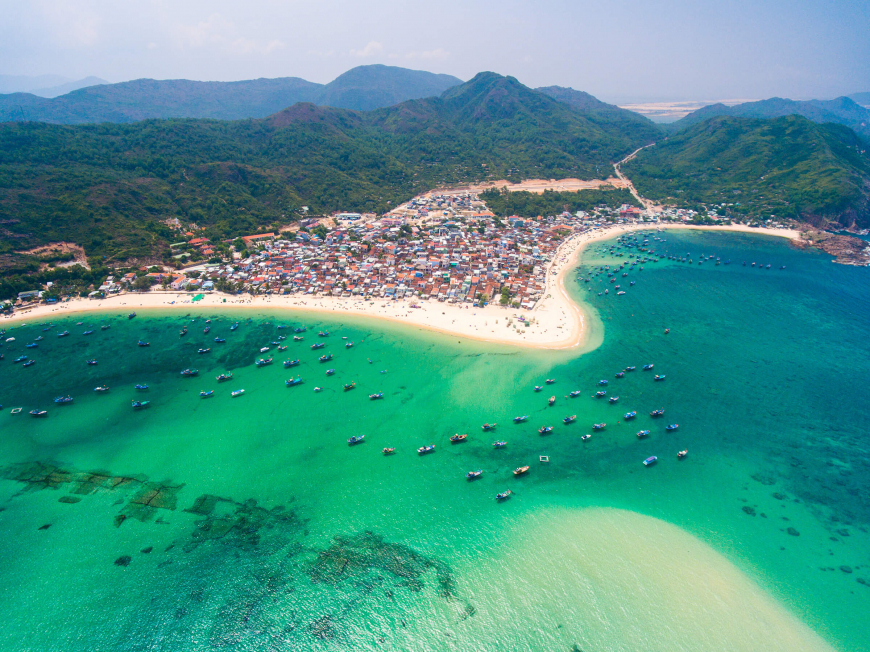
If you prefer a more isolated, laidback experience, Ky Co beach is your ticket. White-sand and gentle lapping waves make it perfect for swimming and sunning. Barbeque on the beach, snorkel the pristine waters, explore tidepools…
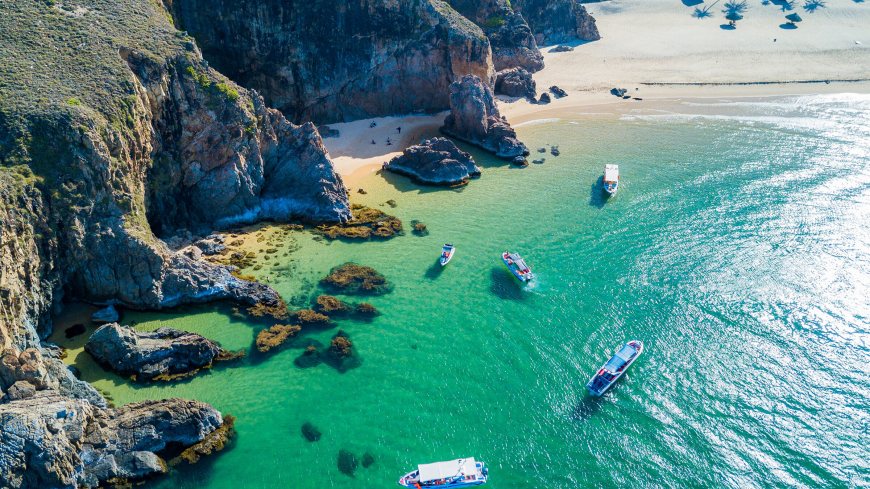
Eo Gio sits in the lap of surrounding mountains. The landscape is geared more for hiking and exploring than swimming. Rocky cliffs, pounding waves, haunting, sing-song sea breezes—a real trekkers delight. You can explore the cliffs and caves, while watching mountain goat’s graze. The beach below resembles an easter basket—egg shaped stones of varying colors and sizes—smoothed and shaped by the sea. Eo Gio is also home to a fishing village, the people who live there gain their sustenance from the sea—the vibe is chill and very authentic.
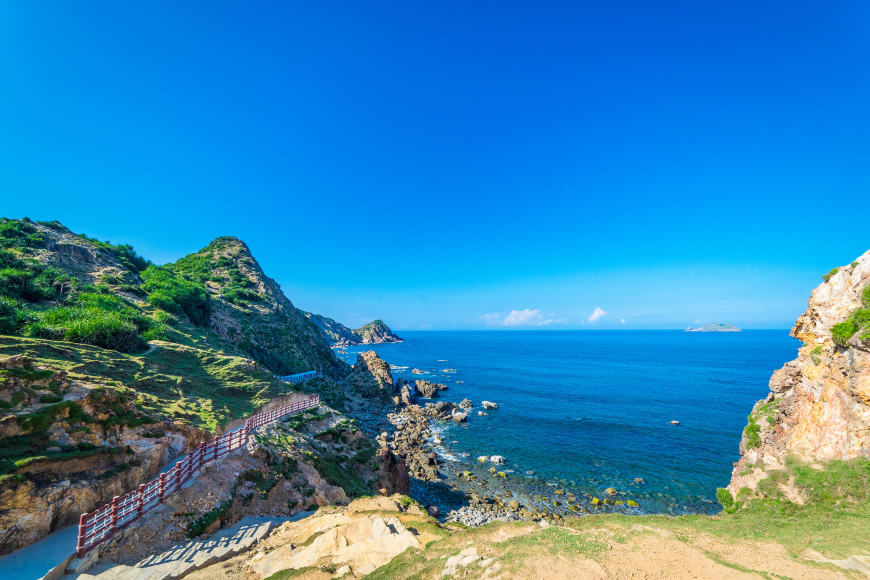
If it’s an island getaway you seek—you’ve got some options…
Hon Kho island is made for day-trips and accessible by boat from Quy Nhon. Famous for its coral reefs, visitors can swim and snorkel in the shallow, clear waters. Marine life abounds—the island is actually a turtle conservation center. There are hiking trails and even a fishing village with restaurants offering scrumptious, fresh-catch.
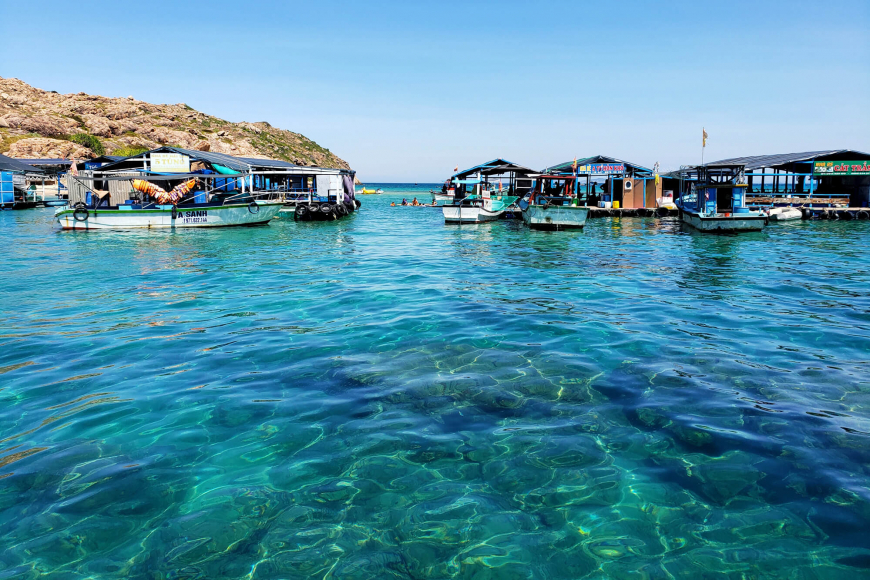
Source: Internet
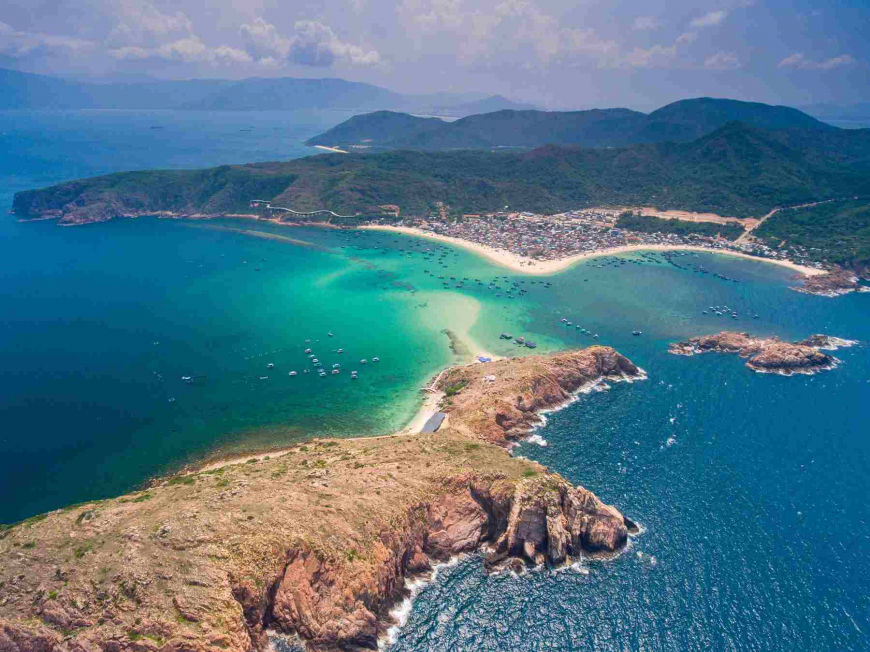
Source: Internet
Cu Lao Xanh is another island worth exploring. But unlike the rough hewn, rocky visage of Hon Kho, Cu Lao Xanh is awash in lush, verdant jungle-green. White sand beaches sprawl. There you’ll find a bounty of water activities and plenty of lodging options. You can climb the steep staircase leading to the old lighthouse. The panoramic view from the top of this architectural wonder is breathtaking.
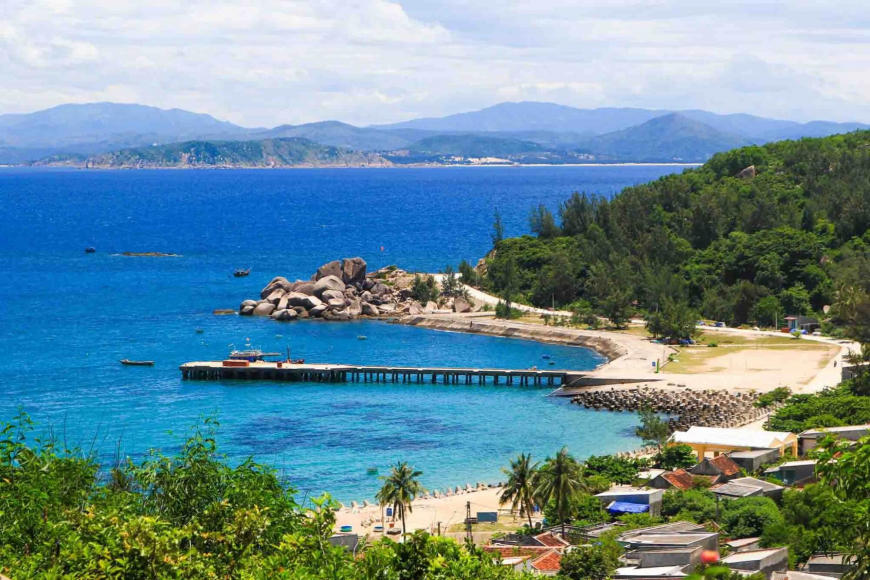
Source: Internet
Though beaches seem to be Binh Dinh’s main draw, there is another aspect to the province that pulls and enthralls the imagination—The Cham Towers.
While other central coast provinces boast Cham cultural relics, each owing its roots to the ancient Champa Kingdom, nowhere in Viet Nam are they as prevalent as in Binh Dinh.
Binh Dinh is home to a series of monument clusters and 14 towers, all dating back to the 11th and 12th century—each providing its own mystical allure. Here are three of the most popular:
The best known of the Cham towers are the Twin Towers in Quy Nhon (only 3km from the city center). Influenced by Hindu art, these square-top towers are ornately carved with dancing monkeys, elephants, lions and deer. The regal towers are surrounded by lawns, manicured hedges, coconut palms and banana trees, providing a surreal juxtaposition—an ancient oasis in the midst of a thriving city.
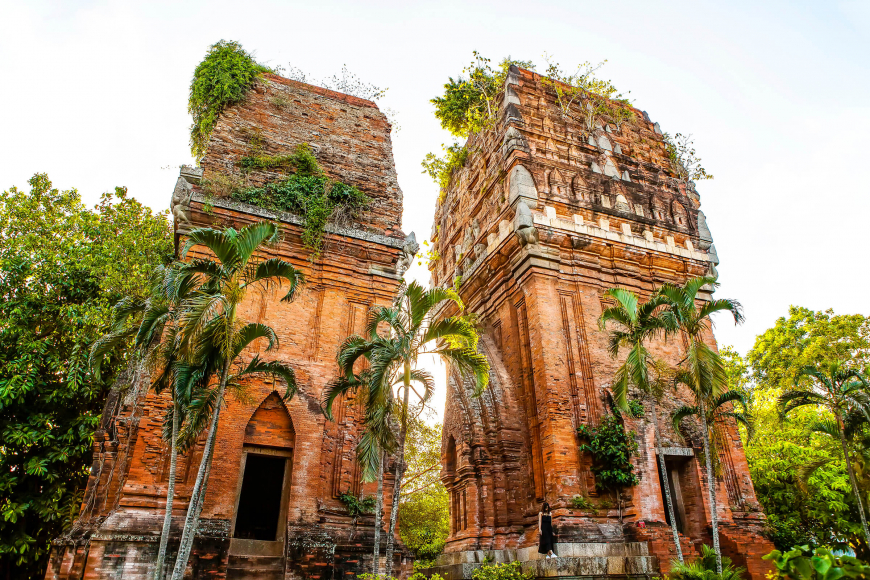
Banh It Tower (20km from Quy Nhon City) is actually a cluster of 4 independent towers, each with its own distinct architectural personality. So uniquely inspiring are these towers that they have been designated as architectural and art monuments by the Ministry of Culture and Information. They’re also highlighted in Mark Irving’s seminal tome: “1,001 Buildings You Must See Before You Die,” (the quintessential guide to the world’s greatest architectural achievements).
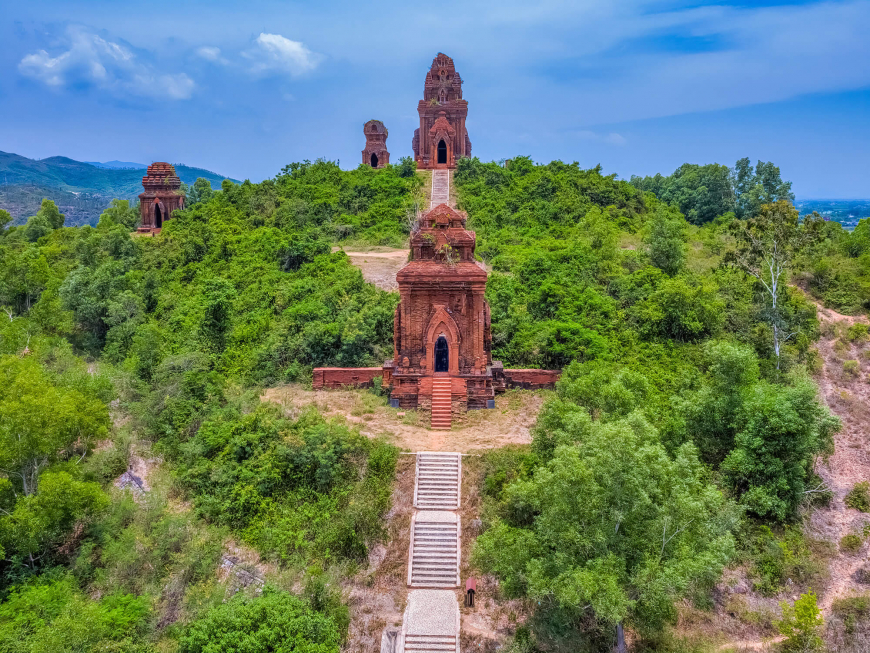
The Duong Long towers (aka The Ivory Towers) are three, stand-alone fixtures, unique in their Kalan minaret style design. Each tower faces east—the central tower is lauded as the tallest premodern brick tower in Southeast Asia.
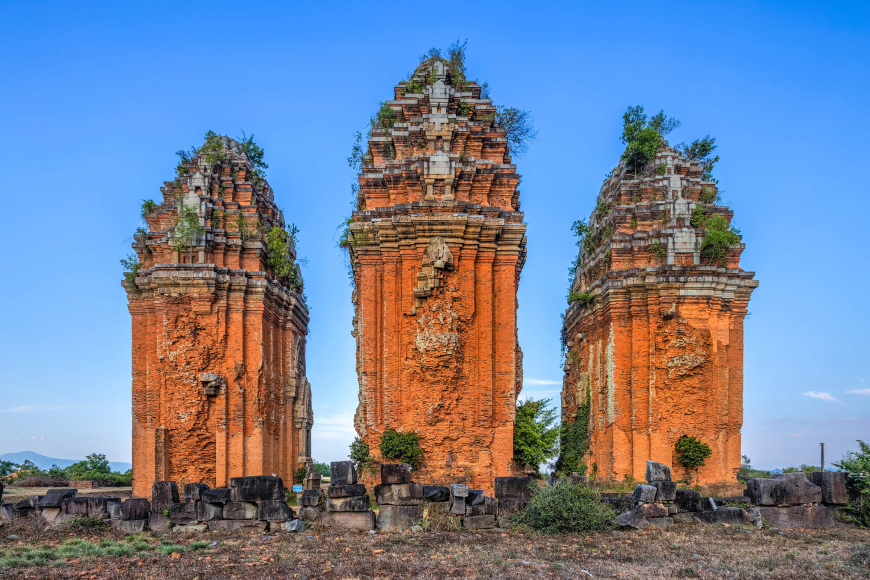
Adorned with intricate, carved decorative designs of flowers, animals, birds, and dancing monks. Each tower is crowned with lotus flowers, their petals pointing skyward.
Here are a few other options…
Hoi Van hot spring is located in the Cat Hiep commune of the Phu Cat district. It is Binh Dinh’s only natural hot spring. Situated in an idyllic setting of mountains, rivers and streams. Since, Hoi Van hot spring has many minerals, rich in therapeutic properties, locals and visitors are drawn to the spring for treatment and relaxation.
Thap Thap Di Da is a 17th century pagoda. Elaborately carved wood, stone dragons and ancient text. The pagoda is a sprawling, historical step-back-in-time. Along with the main structure there are 24 stupas. There are trees that date back three-hundred years.
Binh Dinh province grooves seamlessly from antiquity to the 21st Century. For a timeless experience, make Binh Dinh your travel destination.




